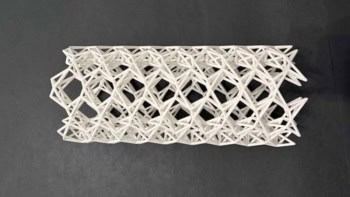Shake a can of mixed nuts and you will often find that all the largest nuts – usually Brazil nuts – move to the top of the can, despite being the heaviest items in the container. But in other situations, where a container has objects of different sizes and densities, the opposite can happen and the biggest items move to the bottom. Now, however, physicists in the US have found that by shaking a can with a mixture of particles for a long enough time, you can cause a sharp transition between the two effects (arXiv:0706.3390v1).

Physicists have several explanations for the classic “Brazil-nut effect” — in which big particles gather at the top of a container — the simplest being that the smaller particles fall through gaps between the larger particles. Another possibility is that “convection currents” cause all particles to rise up through the centre of the can, but that only the smaller particles can join the narrow downward currents that move along the walls of the container. Others have proposed a thermodynamic model whereby the smaller particles “condense” at the bottom of the can.
The “reverse Brazil-nut effect” occurs in containers with particles of different sizes and densities. It is thought to occur either when the larger particles are heavy enough to push the smaller particles out from beneath them, or when the shaking is violent enough that that gaps between smaller particles become large enough for the large particles to fall through.
Now, Matthias Schroeter and colleagues at the University of Texas at Austin claim to be the first to have observed an abrupt transition between the two effects.
The researchers filled a glass tube with a mixture of small glass spheres that were 1.4 mm in diameter and denser, bigger brass spheres that were 2.4 mm in diameter. They then shook the tube up and down at a frequency of 20 Hz, with a maximum acceleration of five times that of gravity, for a period of one hour. The team briefly interrupted the shaking to take photos of the top and bottom of the tube, before resuming shaking once again. Further photos were taken once every hour for about 200 hours.
After the first hour, the system had initially settled into a reverse Brazil-nut state, with nearly all the large spheres sinking to the bottom of the tube. Then, after about 25 hours of shaking, the larger brass spheres suddenly started drifting upwards and within an hour were all at the top of the tube. The system remained in the Brazil-nut state for the remaining 180 hours of the experiment.
Schroeter and colleagues believe that the change was caused by increased friction between the spheres, which became scratched and scuffed after hours of vibration. He told Physics Web that there is always a competition between convection moving the particles upwards, and gravity pulling the larger, heavier particles to the bottom. While gravity wins out at first, increasing friction between particles boosts the rate of convection until it begins to dominate at about 25 hours, explained Schroeter.
They confirmed this idea by repeating the experiment having repolished the scuffed spheres in an ultrasonic cleaner. As before, the brass spheres started off at the bottom of the tube for 25 hours, before rising again to the top. They also measured the coefficients of friction between the spheres before and after the transition and found that friction had increased significantly.
The team are now doing computer simulations to gain further insight into the effects of friction on the two processes.



